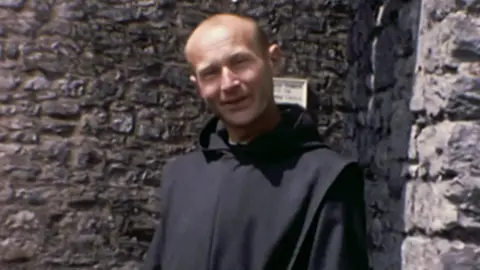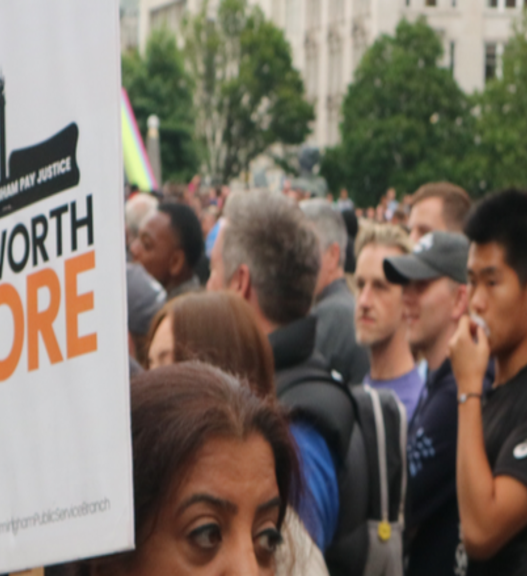 BBC
BBCVictims of child sexual abuse were treated in a heartless, hostile and cruel way by monks on a remote island, a safeguarding review has found.
One survivor said the way she had been treated since her time on Caldey Island, off Pembrokeshire, has made the effects of the abuse “a million times worse”.
The review said frequent allegations of abuse had been made but not followed up on or reported to police, and the lack of challenge had enabled a monk to abuse children over four decades “in plain sight”.
Caldey Abbey commissioned the report, and its new abbot apologised for the pain and suffering caused.
Rebecca lived on Caldey Island for the first five and a half years of her life.
What and where is Caldey Island?
The island and all the property on it are off the coast of the popular seaside resort of Tenby in south-west Wales.
Caldey is owned by a group of Cistercian monks and tens of thousands of tourists visit each year.
As well as the monks, there are lay people who live and work there.
Between the late 1960s until 1992, a resident monk, Father Thaddeus Kotik, sexually abused children who lived and visited the island, a review said.
Rebecca is one of 16 survivors who have shared their stories with consultant social worker Jan Pickles, who was commissioned by the abbey to write the review.
Kotik would groom Rebecca and other children with the promise of sweets, chocolate and other gifts.
He would then abuse them.
“I tried to get away, but I couldn’t,” Rebecca said.
“His hands were really rough and he was holding me too tightly. It hurt.”
 Rebecca
RebeccaThe abuse continued throughout her time on Caldey and the effects have lasted a lifetime, Rebecca said.
As a teenager, she had feelings of self-hatred and worthlessness, and could not make friends.
Her feelings led her to self-harm and even several suicide attempts.
“I don’t know how I survived, it was terrible,” she said.
As an adult it has affected her ability to work and trust people.
Had it not been for her husband, she said, she “probably wouldn’t be here”.
Rebecca was one of six women to receive a “meagre” amount of compensation from the abbey in a civil claim in 2017, but it came without an apology.
She said it had felt like “hush money”.
“The many cover-ups over the years have made the effects of the abuse a million times worse,” Rebecca added.
“I felt re-victimised over and over again by the way we were all treated.
“You go back to feeling [like] that victim when you were a young child, helpless.”

Report author Jan Pickles said the abbey had responded in a “heartless way” to victims who were “very vulnerable and very damaged” by what had happened “at the hands of a monk, part of its community”.
Rebecca said the review had “done justice to her truth” and the abbot’s apology was better than nothing but had come too late.
She said: “Learning that the abuse went back as far as the 1960s makes me feel even more angry and upset, because how many times could they have done something about it?
“I don’t think they’re men of God.
“They never have been, they don’t answer to anyone. It’s hypocrisy in the worst way. They’re living a lie.”
How long have monks lived on Caldey Island?
Caldey was first inhabited in the mid-Stone Age and has been occupied by monks since the 6th Century.
Benedictine monks from the Pembrokeshire coast occupied it in the Middle Ages, but its modern transformation began in the early 20th Century.
Aelred Carlyle, or “druid Abbot”, founded the modern abbey and restored the Norman priory and St Illtyd’s church.
But when Carlyle’s order went bust and converted back to Catholicism in the 1920s, the island was sold to Belgian Trappist monks of the Cistercian order, who still live there.
How many monks live on Caldey?
According to the island’s website, the number of monks there “became dangerously low” in the early 1980s.
But it says the community then began to grow again.
However, deaths of older monks have left numbers “once more quite low”.
The review outlined several missed opportunities, and said there appeared to have been a failure of leadership at the highest level.
It said repeated and frequent allegations of sexual abuse against Kotik had not been reported to the authorities as the law of that time required.
In addition, the review said the “unnecessary adversarial response” had further damaged victims and their families.
“This strategy has led the abbey’s approach to be seen as hostile and cruel,” it said.
Two of the three solicitors representing victims described responses from the abbey and their legal team as “the most hostile” they had ever received from any organisation.
One of the survivors was even threatened with legal action and another described as a “fantasist”, the review found.

The review said other sex offenders had spent time on Caldey, including Paul Ashton, who lived there for seven years using an alias while on the run from police.
He had unrestricted access to the IT system and used it to download indecent images of children.
A visitor who discovered his true identity informed police and he was later jailed.
The visitor believed he had been operating a child pornography distribution network from the island, masquerading as a cleaning company.
The review also described the inconsistent arrangements around tenancies and employment on the island.
It said tenancies for the homes, owned by the abbey, were awarded and withdrawn “for reasons unknown”.
The unstable conditions, unaccountable decisions and lack of formal rights “contributed to a dependence on the abbey’s goodwill”, it said.
That meant people living there might have been reluctant to do anything that might risk them losing their homes or jobs.
Father Jan Rossey, who took on the role of abbot last year, said safeguarding was now his priority and he had put measures in place to ensure the correct response to any allegations would be followed.
“I give my sincere apologies,” he said.
“I’m very sorry for all the suffering but also afterwards, for [victims] not being listened to.
“It’s heartbreaking to read those stories.”

The report made 12 recommendations which he said would be implemented in full.
Father Jan said improvements had already been made, including safeguarding training for all on the island as well as mandatory DBS checks.
Details of organisations offering information and support for victims of child sexual abuse are available at bbc.co.uk/actionline.





















